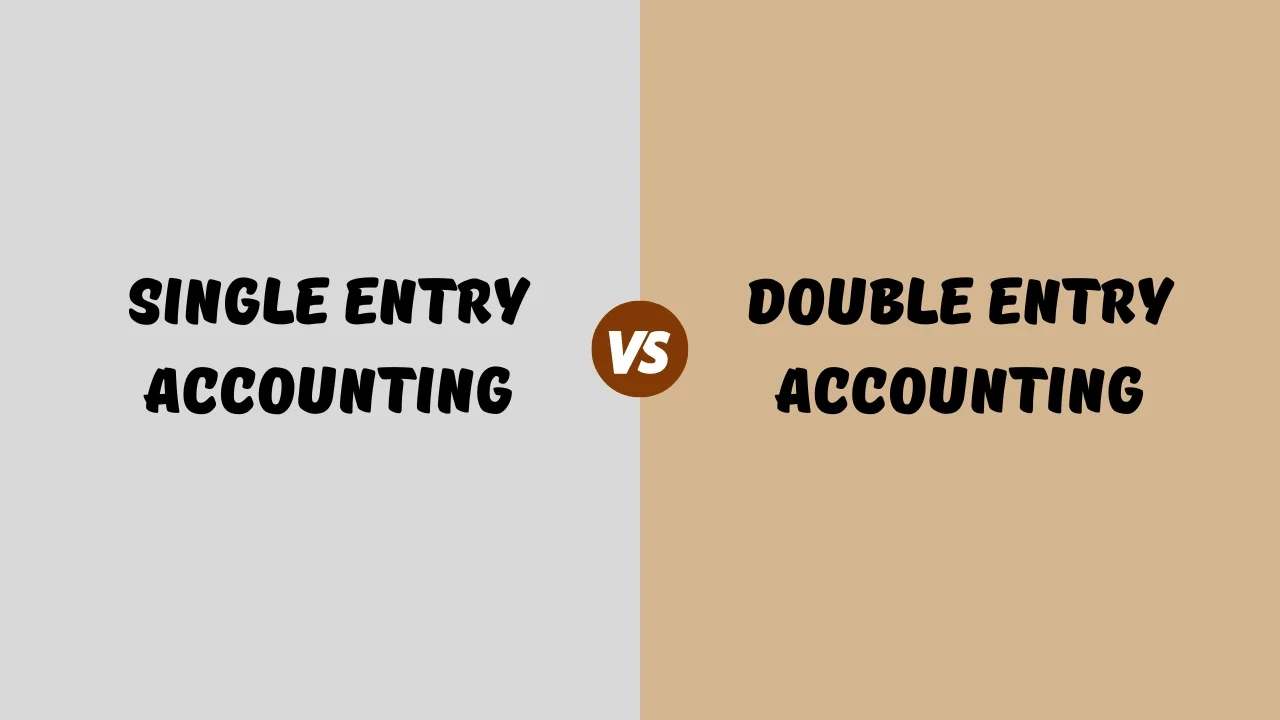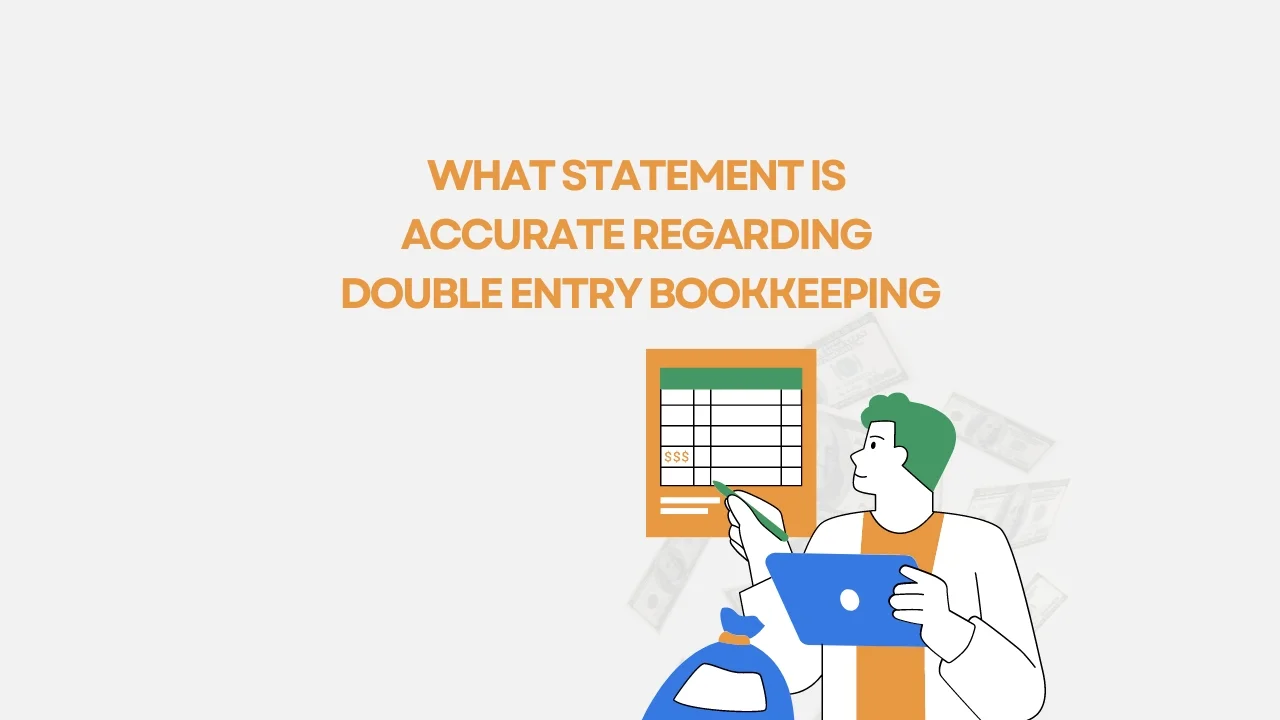Double entry accounting records every financial transaction in two accounts: a debit in one and a credit in another. This method ensures the accounting equation balances.
Double entry accounting is the cornerstone of modern financial record-keeping. It maintains balance by recording each transaction twice, once as a debit and once as a credit. This dual-entry system offers a more complete view of a company’s financial health, reducing errors and providing greater accuracy.
Businesses can track income, expenses, assets, and liabilities efficiently. This method is essential for producing accurate financial statements and making informed business decisions. Adopting double entry accounting can streamline financial management and enhance transparency, making it indispensable for organizations of all sizes.
History of Double Entry Accounting
Double entry accounting is a system that records each transaction in two accounts. This method helps keep the books balanced. It was invented in Italy during the Renaissance. Today, it is used all over the world.
Origins of Double Entry Accounting
Double entry accounting began in Italy. Merchants needed a way to keep track of their sales and purchases. Luca Pacioli, a mathematician, wrote about this system in 1494. His book was called “Summa de Arithmetica.” It explained how to use double entry accounting.

How Double Entry Accounting Works
Each transaction affects two accounts. One account gets debited and the other gets credited. For example, buying goods for cash increases inventory but decreases cash. This keeps the books balanced.
Benefits of Double Entry Accounting
Double entry accounting helps prevent mistakes. It also provides a complete picture of finances. Businesses can see where their money comes from and where it goes. This system also helps in detecting fraud.
Modern Use of Double Entry Accounting
Today, double entry accounting is used by businesses worldwide. It is a standard method taught in accounting courses. Many accounting software programs are based on this system. It remains a reliable way to keep financial records.
Basic Principles of Double Entry Accounting
Double entry accounting is a system that records each transaction in two accounts. This method ensures that the accounting equation remains balanced. It’s the foundation of modern accounting and provides a clear picture of a company’s financial health.
Debits and Credits
Debits and credits are the two main components of double entry accounting. Each transaction involves a debit in one account and a credit in another. This keeps the books balanced.
Debits increase asset or expense accounts. They decrease liability or equity accounts. Debits are recorded on the left side of an account.
Credits do the opposite. They decrease asset or expense accounts and increase liability or equity accounts. Credits are recorded on the right side of an account.
Here are some examples:
Paying rent: Debit Rent Expense, Credit Cash
Receiving loan: Debit Cash, Credit Loan Payable
Buying equipment: Debit Equipment, Credit Cash
Assets, Liabilities, and Equity
Assets, liabilities, and equity are the three main parts of a balance sheet. They show what a company owns, owes, and the owner’s stake.
Assets are resources owned by the company. They include cash, inventory, and equipment. Assets provide future economic benefits.
Liabilities are obligations that the company must pay. They include loans, accounts payable, and mortgages. Liabilities represent claims against the company’s assets.
Equity is the owner’s interest in the company. It includes common stock and retained earnings. Equity is calculated as Assets minus Liabilities.
| Category | Examples |
|---|---|
| Assets | Cash, Inventory, Equipment |
| Liabilities | Loans, Accounts Payable, Mortgages |
| Equity | Common Stock, Retained Earnings |
The Accounting Equation
The accounting equation is the foundation of double entry accounting. It states that Assets = Liabilities + Equity. This equation must always balance.
Assets are what the company owns. Liabilities are what the company owes. Equity is the owner’s claim after liabilities are paid.
Here is how the equation works:
- If a company buys equipment with cash, assets increase and decrease by the same amount.
- If a company takes a loan, both assets (cash) and liabilities (loan payable) increase.
- If a company earns revenue, assets (cash) and equity (retained earnings) increase.
The equation ensures that the company’s books are always balanced. Every transaction affects at least two accounts, keeping the equation in balance.
Types of Accounts
Double entry accounting is a system where every transaction affects two accounts. This method helps ensure accuracy. It also provides a complete view of financial health. Understanding the types of accounts is crucial. These accounts include assets, liabilities, equity, revenue, and expenses. Each plays a unique role in the system.
Asset Accounts
Asset accounts represent things of value owned by a business. These can be both tangible and intangible. Examples include cash, inventory, and patents. Assets are vital as they support operations. They also help in generating revenue.
Here are some common asset accounts:
- Cash: Money available for immediate use.
- Accounts Receivable: Money owed to the business by customers.
- Inventory: Goods available for sale.
- Property, Plant, and Equipment: Long-term assets used in operations.
- Intangible Assets: Non-physical assets like patents and trademarks.
Assets are recorded on the balance sheet. They are usually listed in order of liquidity. This means how quickly they can be converted to cash. Properly managing assets is key to business success.
Liability Accounts
Liability accounts represent obligations a business owes to others. These are debts or future sacrifices of economic benefits. Liabilities can be short-term or long-term.
Common liability accounts include:
- Accounts Payable: Money the business owes to suppliers.
- Short-term Loans: Loans that need to be repaid within a year.
- Long-term Debt: Loans or bonds payable over a longer period.
- Accrued Expenses: Expenses that have been incurred but not yet paid.
- Deferred Revenue: Money received for goods or services not yet delivered.
Liabilities are also listed on the balance sheet. They are usually categorized by their due date. Managing liabilities well helps maintain financial stability.
Equity Accounts
Equity accounts represent the owner’s interest in the business. These are the residual interest in the assets after deducting liabilities. Equity is also known as net assets or owner’s equity.
Key equity accounts include:
- Common Stock: Capital invested by the owners.
- Retained Earnings: Profits reinvested in the business.
- Additional Paid-in Capital: Amounts received from investors above the par value of stock.
Equity accounts show the financial strength of the business. They are important for investors and owners. Positive equity indicates a healthy financial position.
Revenue Accounts
Revenue accounts track the income generated by the business. These accounts record money earned from selling goods or services. Revenue increases the equity of the business.
Key revenue accounts include:
- Sales Revenue: Income from selling products.
- Service Revenue: Income from providing services.
- Interest Revenue: Income from interest-bearing investments.
- Rental Income: Income from renting out property.
Revenue accounts are crucial for measuring business performance. Higher revenue usually indicates better business health. These accounts are reported on the income statement.
Expense Accounts
Expense accounts track the costs incurred by the business. These accounts record money spent on operations. Expenses decrease the equity of the business.
Key expense accounts include:
- Cost of Goods Sold (COGS): Costs directly associated with producing goods.
- Rent Expense: Costs for renting property or equipment.
- Salaries and Wages: Payments made to employees.
- Utilities Expense: Costs for electricity, water, and other utilities.
- Depreciation Expense: Allocation of the cost of tangible assets over time.
Expense accounts are essential for tracking business costs. They help in budgeting and financial planning. These accounts are reported on the income statement.
Double Entry Accounting Examples
Double entry accounting is a bookkeeping system that ensures accuracy. Each transaction affects two accounts. This method provides a complete record of financial activities. It helps in tracking where money comes from and where it goes. Businesses use this system to maintain balanced books and make informed decisions.
Example 1: Purchase of Inventory
A business buys inventory worth $1,000. This purchase affects two accounts: inventory and cash. Inventory increases by $1,000, and cash decreases by $1,000. Both sides of the entry balance each other.
- Debit: Inventory $1,000
- Credit: Cash $1,000
Recording the purchase of inventory ensures the business has a record of the stock. It also shows the reduction in available cash. This helps in planning future purchases and managing cash flow effectively.
Example 2: Sale of Goods
A company sells goods worth $2,000. This sale affects two accounts: sales revenue and accounts receivable. Sales revenue increases by $2,000, and accounts receivable also increase by $2,000. This entry reflects the income earned and the amount customers owe.
- Debit: Accounts Receivable $2,000
- Credit: Sales Revenue $2,000
After receiving the payment from customers, another entry is made. This records the cash received and reduces accounts receivable.
- Debit: Cash $2,000
- Credit: Accounts Receivable $2,000
These entries ensure the business records both the sale and the payment accurately. This helps monitor sales performance and manage customer payments.
Example 3: Payment of Expenses
A business pays $500 for office rent. This payment affects two accounts: rent expense and cash. Rent expense increases by $500, and cash decreases by $500. This entry reflects the cost incurred for using office space.
- Debit: Rent Expense $500
- Credit: Cash $500
Paying for expenses ensures the business keeps track of its spending. It helps in budgeting and controlling costs. Accurate records of expenses are crucial for financial reporting and tax purposes.
Bottom Line
Double entry accounting ensures financial accuracy and transparency. This system records each transaction twice, balancing debits and credits. The advantage of double entry accounting is that businesses can track finances effectively, reducing errors. So, understanding this method is crucial for financial management. Implement double entry accounting to maintain reliable financial records and make informed decisions.





Leave a Reply